Being Radiotropic (2016)
We are radiotropes. Just as other lifeforms orientate themselves in response to the sun's radiation, many contemporary human behaviours are shaped by electromagnetic landscapes and signal topographies. We prepare for the quiet zone of the subway and notice how data speeds vary as we move between networks and across geographies.
Being Radiotropic is a series of eccentric wireless routers that explore this sensitivity and that ask how we might otherwise design our wireless infrastructures.
Being Radiotropic is a series of eccentric wireless routers that explore this sensitivity and that ask how we might otherwise design our wireless infrastructures.

Exhibition view, ‘Tega Brain, 2016, Being Radiotropic, New York City’, Inside/Out, Eyebeam Artist Showcase, Southstreet Seaport.
Each router provides an open wireless network that misbehaves and functions in unexpected and eccentric ways. Could our radiotropism be leveraged to shift our perceptions of other lifeforms and non-human systems?
![]()
AN ORBIT
An Orbit is a router that couples signal strength with moon phase. For one day per month it provides maximum wifi signal, and for one day per month it provides no network at all. Between these points the signal waxes and wanes, oscillating over a 28-day period.
AN ORBIT
An Orbit is a router that couples signal strength with moon phase. For one day per month it provides maximum wifi signal, and for one day per month it provides no network at all. Between these points the signal waxes and wanes, oscillating over a 28-day period.
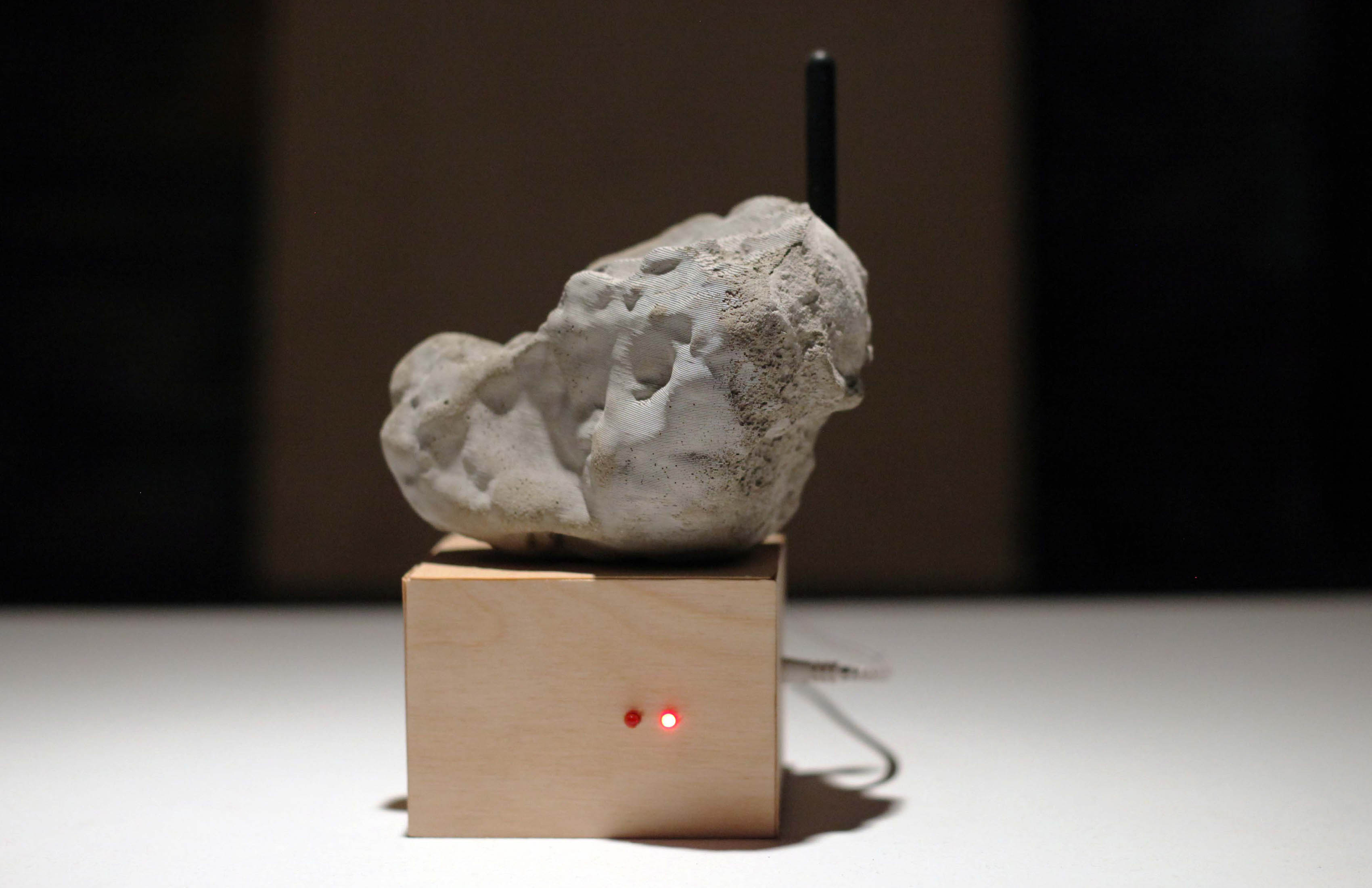
Installation detail, ‘Tega Brain, 2016, Being Radiotropic, New York City’, Inside/Out, Eyebeam Artist Showcase, Southstreet Seaport.
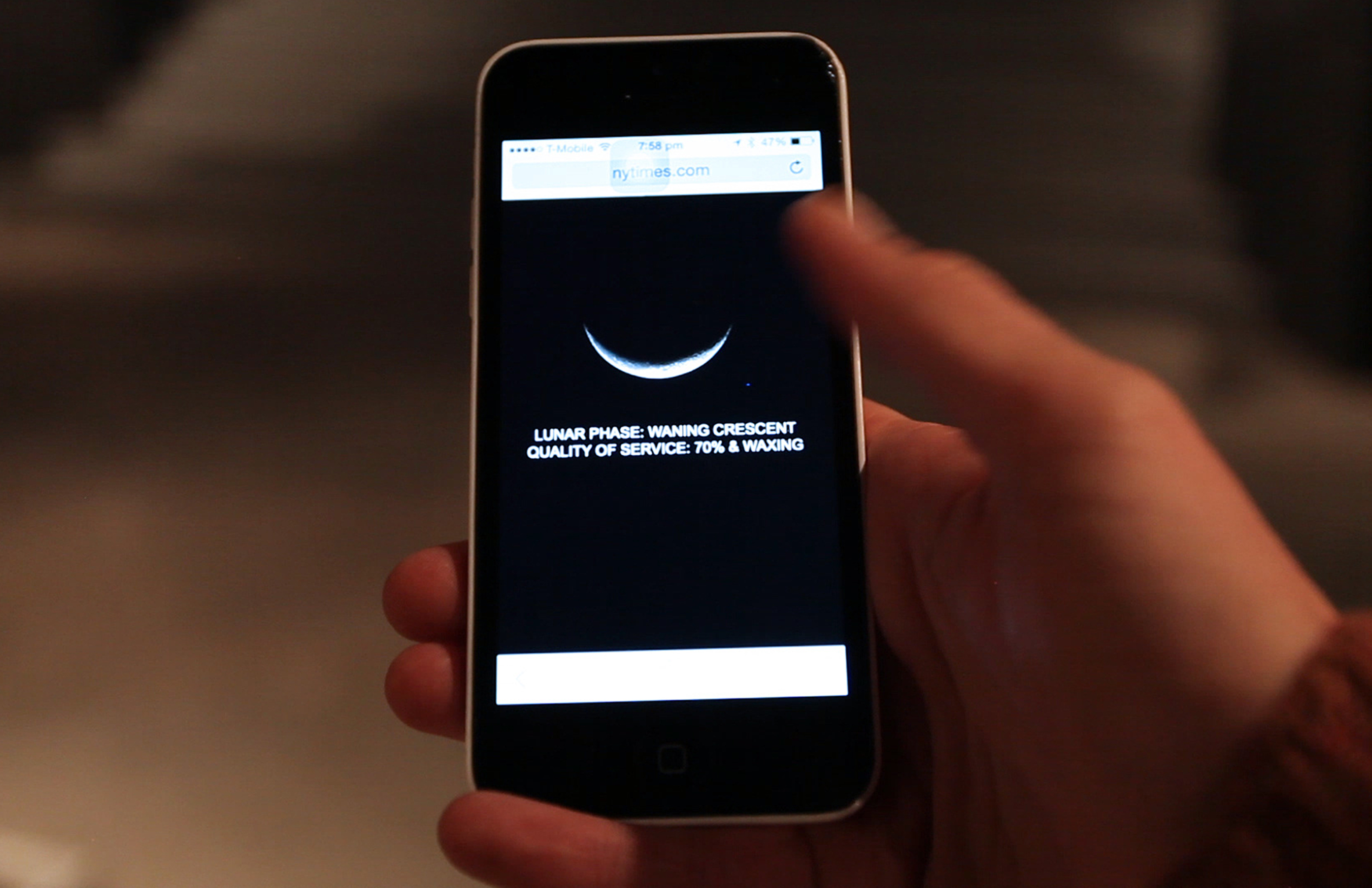
Installation detail, ‘Tega Brain, 2016, Being Radiotropic, New York City’, Inside/Out, Eyebeam Artist Showcase, Southstreet Seaport.
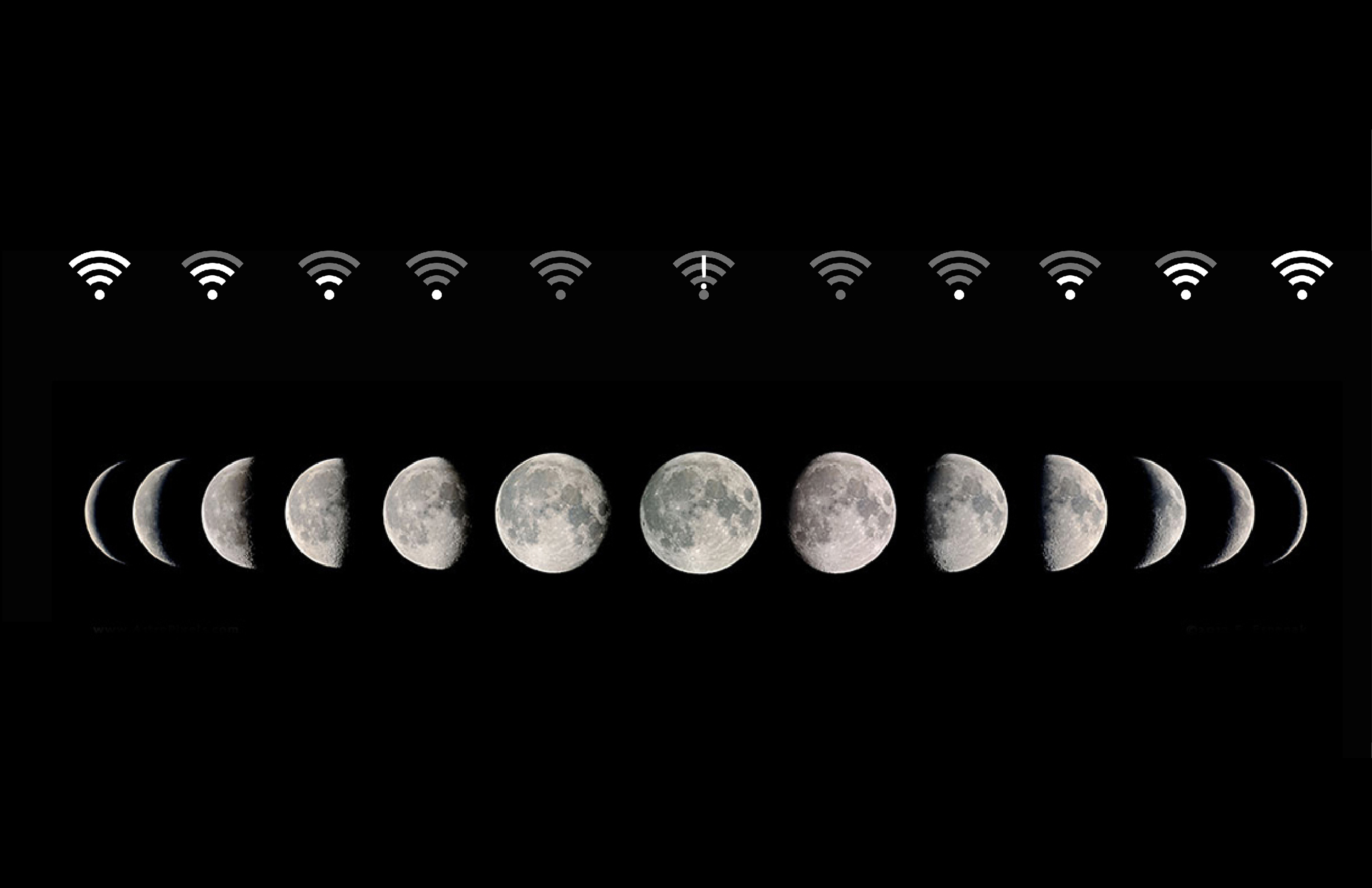
Project detail, ‘Tega Brain, 2016, Being Radiotropic’.
OPEN FLAME
Open Flame is a router paired with a candle. To bring up this network the candle must be lit, and when it is blown out, the network disappears.
Open Flame is a router paired with a candle. To bring up this network the candle must be lit, and when it is blown out, the network disappears.
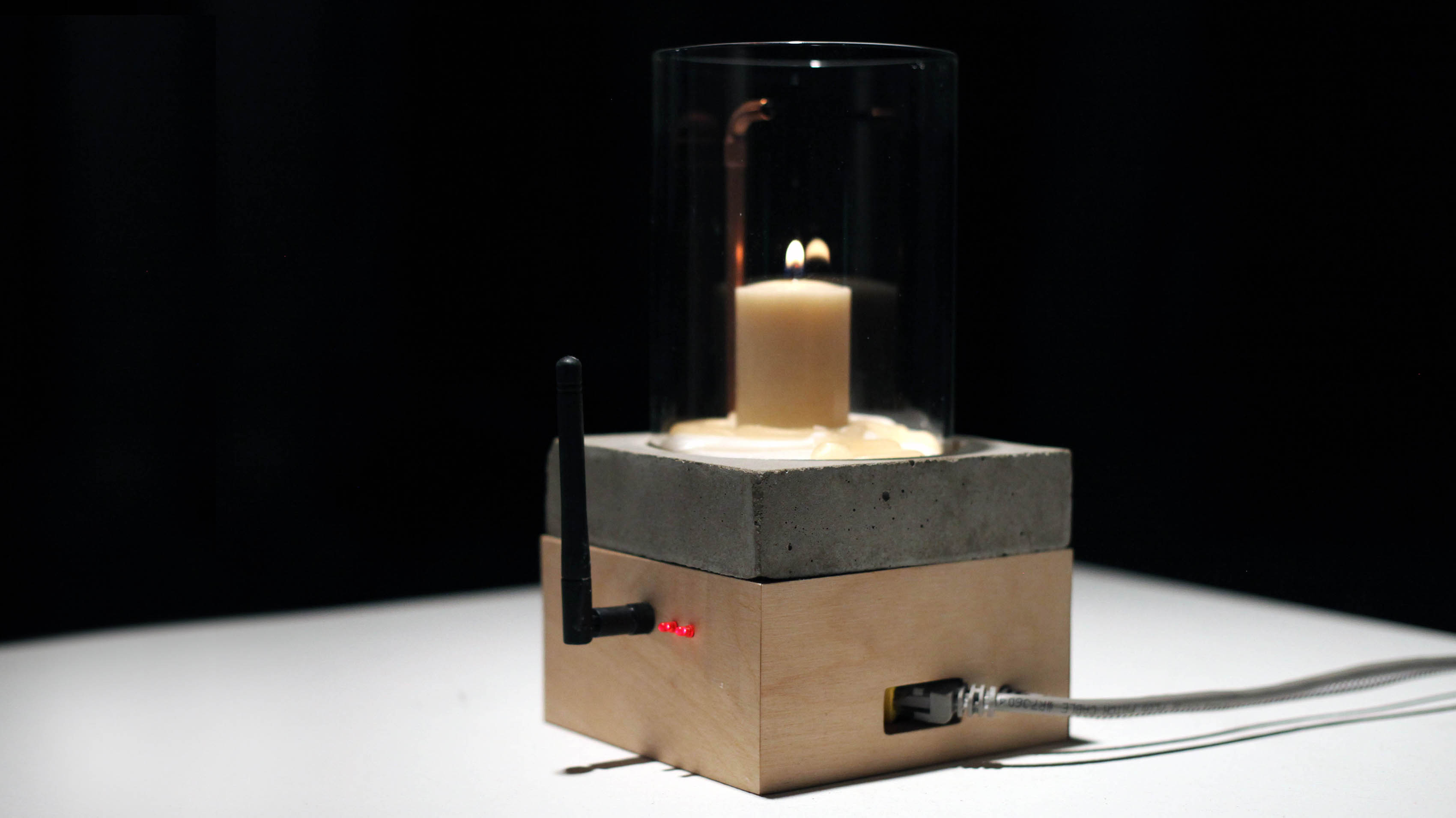
Installation detail, ‘Tega Brain, 2016, Being Radiotropic, New York City’, Inside/Out, Eyebeam Artist Showcase, Southstreet Seaport.
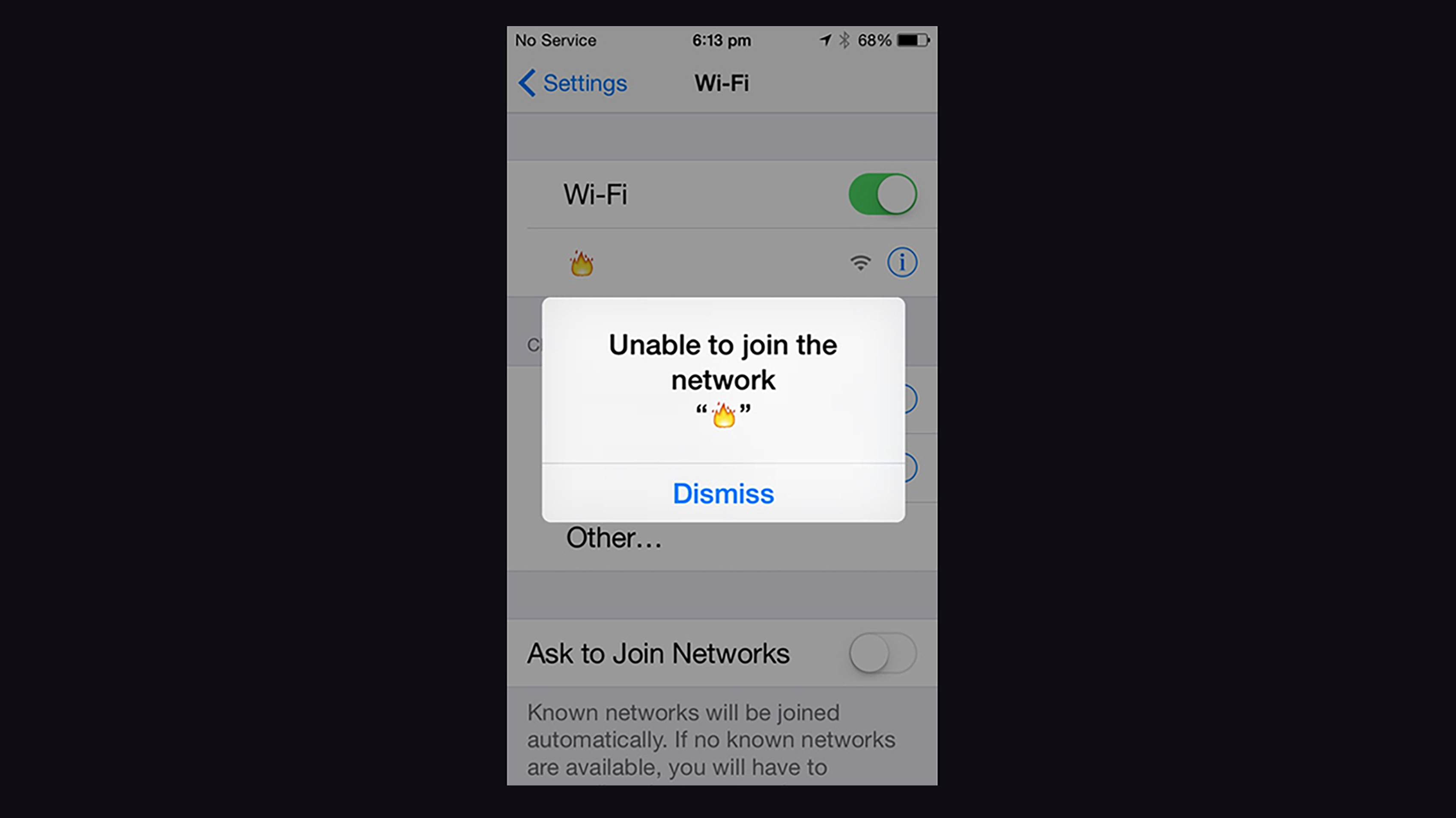
Installation detail, ‘Tega Brain, 2016, Being Radiotropic, New York City’, Inside/Out, Eyebeam Artist Showcase, Southstreet Seaport.
THE WOODS
The Woods offers a wireless network controlled by the disposition of a house plant. This router equips the plant with the ability to manipulate the content of websites accessed on its network.
The Woods offers a wireless network controlled by the disposition of a house plant. This router equips the plant with the ability to manipulate the content of websites accessed on its network.
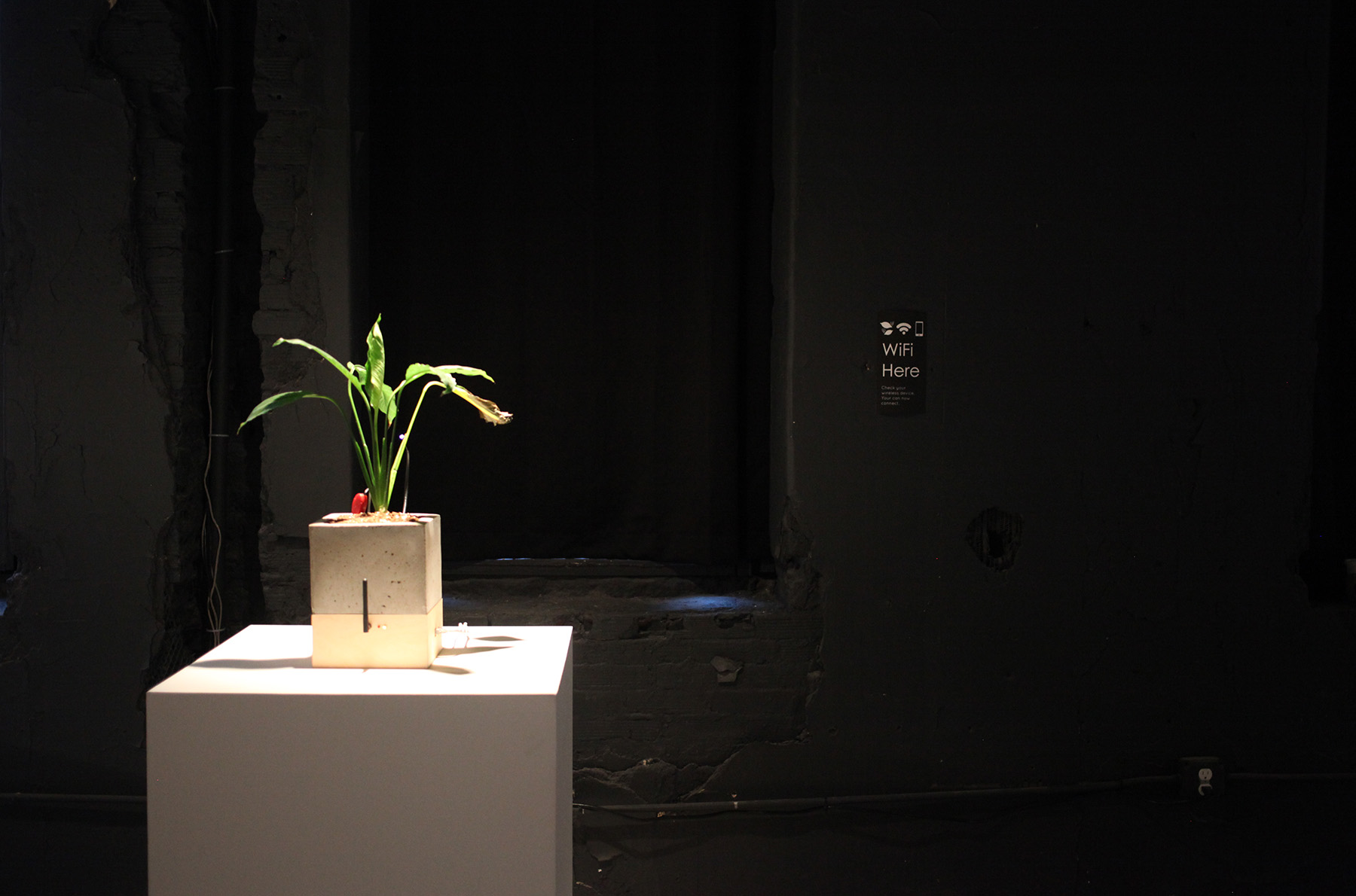
Exhibition view, ‘Tega Brain, 2016, Being Radiotropic, New York City’, Inside/Out, Eyebeam Artist Showcase, Southstreet Seaport.
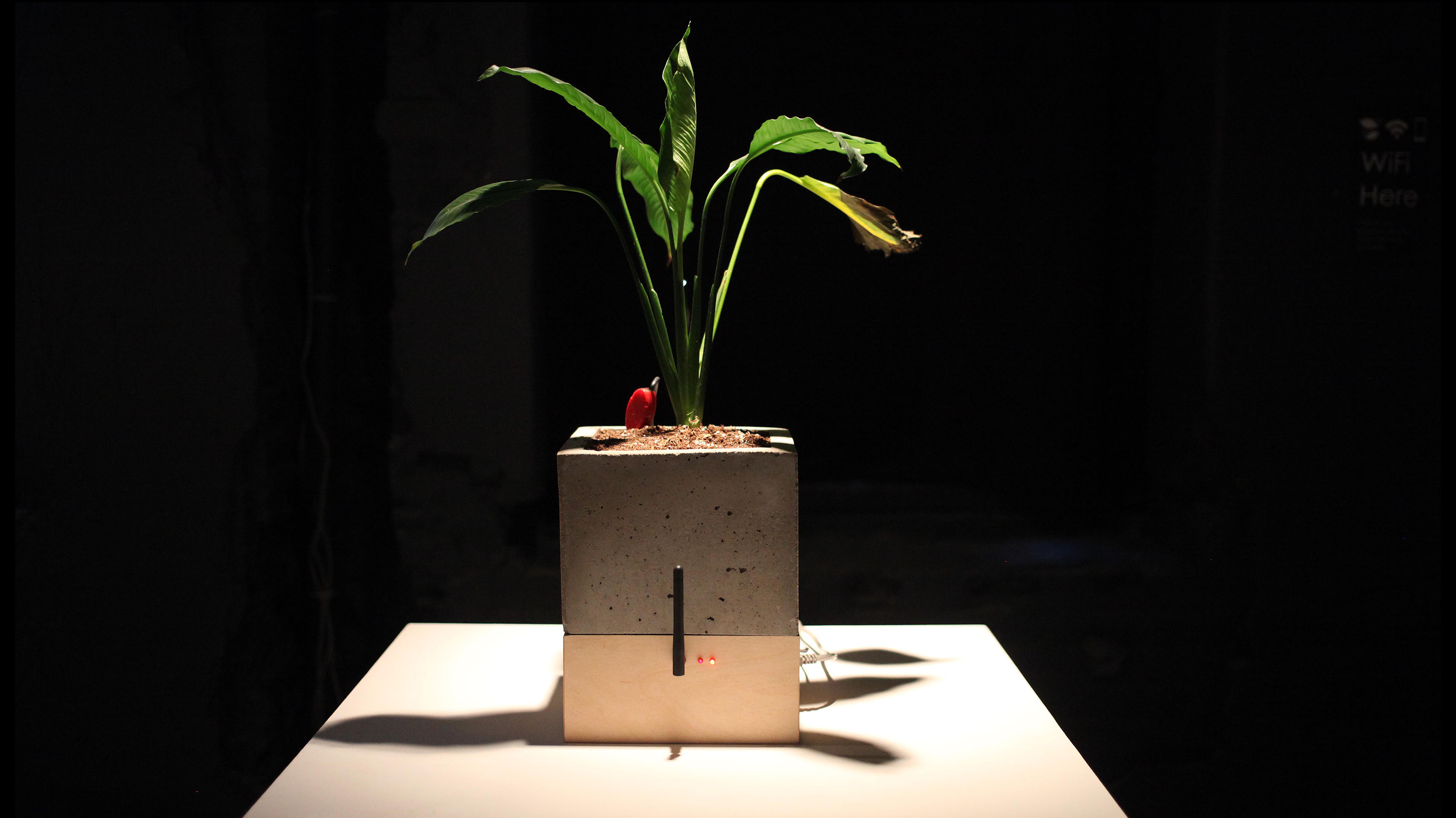
Installation detail, ‘Tega Brain, 2016, Being Radiotropic, New York City’, Inside/Out, Eyebeam Artist Showcase, Southstreet Seaport.
The plant is equipped with a camera and it is able to take images of itself and inject them into websites and apps. It's disposition is approximated by several sensors and if things get really bad, it can kick a user off its network.
These devices are examples of eccentric engineering. Eccentric engineering asks questions of how we design the everyday technologies that sustain us. It is a provocation for thinking about infrastructures as negotiations with non-human organisms and systems, rather than as exclusively human services.
How might our technologies be designed to represent and amplify our interactions with non-human organisms and environmental systems, rather than conceal these intimacies?
These devices are examples of eccentric engineering. Eccentric engineering asks questions of how we design the everyday technologies that sustain us. It is a provocation for thinking about infrastructures as negotiations with non-human organisms and systems, rather than as exclusively human services.
How might our technologies be designed to represent and amplify our interactions with non-human organisms and environmental systems, rather than conceal these intimacies?
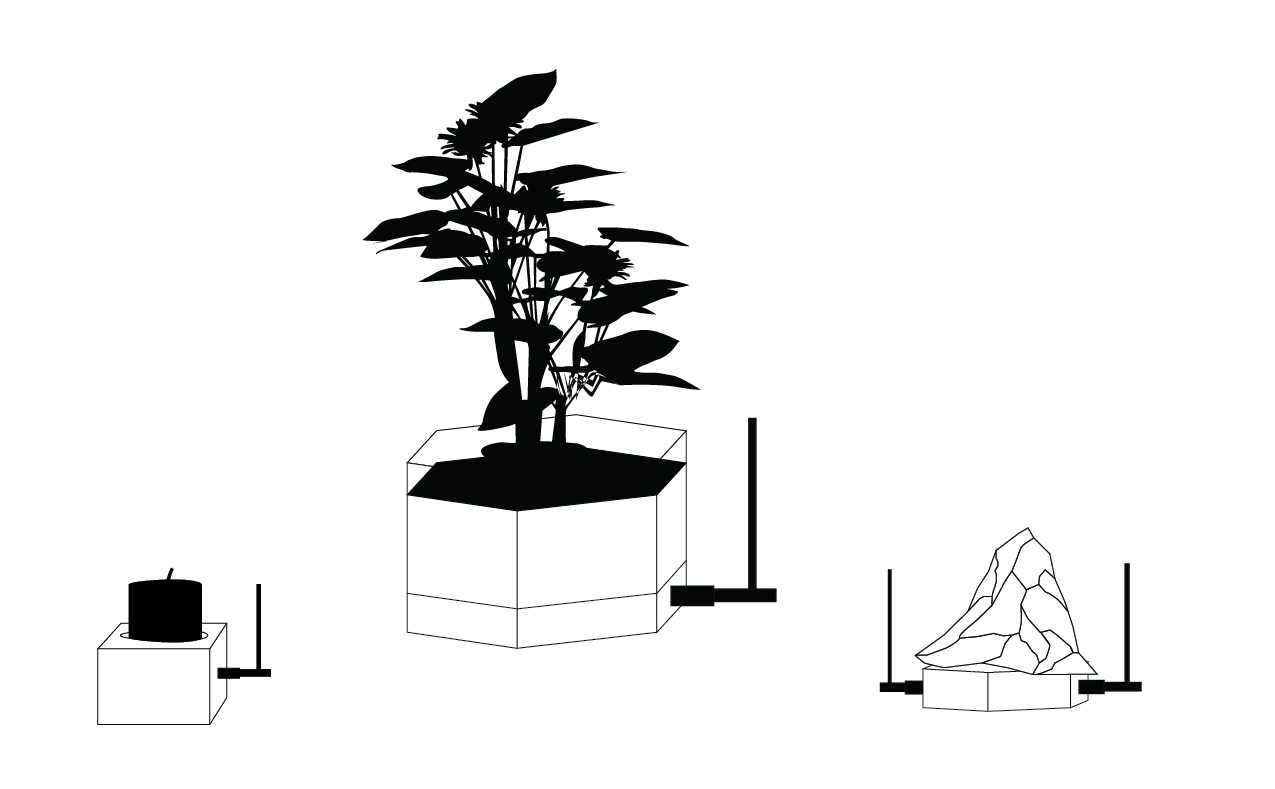
Project graphic, ‘Tega Brain, 2016, Being Radiotropic.
CREDITS
Routers:
Made with the support of Eyebeam NYC and the Australia Council for the Arts.
Thanks to Jon Moeller and Josh Levine for assistance with the linux programming.
Video:
Director of photography: Hannah Jayanti.
Lighting: Lara Aqel.
Routers:
Made with the support of Eyebeam NYC and the Australia Council for the Arts.
Thanks to Jon Moeller and Josh Levine for assistance with the linux programming.
Video:
Director of photography: Hannah Jayanti.
Lighting: Lara Aqel.